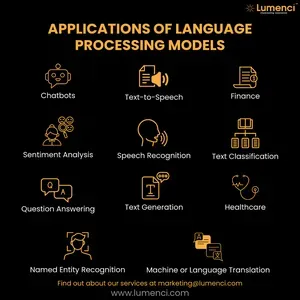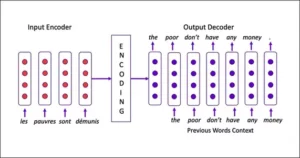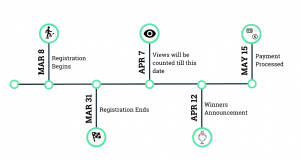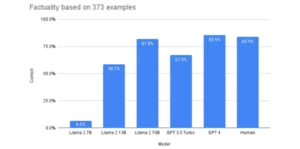Introduction
The rise of Large Language Models (LLMs) like ChatGPT has been revolutionary, igniting a new era in how we interact with technology. These sophisticated models, exemplified by ChatGPT, have redefined how we engage with digital platforms. Think about it – how often have you used tools like ChatGPT to effortlessly write an email or employed generative AI to bring your wildest imaginations to life through stunning images? This relentless evolution of Generative AI technology is not just a scientific advancement; it’s a gateway to endless creative possibilities, reshaping our digital landscape at a breathtaking pace. Yet, there’s a noticeable gap in this whirlwind of rapid progress. While we marvel at the outputs of Generative AI, a deeper understanding of its fundamentals and practical applications remains elusive for many. This is where this blog steps in. Introducing a solution—Generative AI Resources.
I’ve meticulously compiled an ordered list of top Generative AI courses to empower you with this cutting-edge knowledge. This isn’t just a list; it’s your roadmap to unraveling the magic behind these amazing tools. Whether you’re a curious learner, an aspiring AI enthusiast, or a professional looking to enhance your skill set, these courses cater to your thirst for knowledge.

Table of contents
List of Generative AI Resources For You
Step 1: How do you get started with Generative AI?
If you are a beginner to Generative AI, start with this course on Generative AI for Everyone. In this Generative AI course, you will explore the workings of generative AI, common use cases, and capabilities. You will also learn how to build effective prompts and understand the potential opportunities and risks this technology poses for individuals, businesses, and society.
Now, the next thing to learn is how to use the popular Generative AI tools like ChatGPT, Midjourney, and more. In this course on Generative AI tools, you will get to learn exactly that. You will understand the basics of generative AI, learn about the most popular tools for text generation and image generation, and even how to use them for various applications like image editing, crafting emails, creating visual content, and more.
Additional Generative AI Resources
- “The state of GPT” by Karpathy: Watch here
- A Gentle Introduction To Generative AI For Beginners: Read here
Step 2: Where to learn about Prompt Engineering?
Once you have learnt about Generative AI, the next step is to play around with the technology and get enamoured by its possibilities. The best way to do that is to fiddle around with ChatGPT. But did you know that even to get the best out of ChatGPT, you must learn about Prompt Engineering? Now you ask, what is that? Well, it is the way we interact with an LLM and get the desired result.
To learn that, you can start with this course by Codecademy on Prompt Engineering. This will get you started with the basics. If you want to jump onto something detailed, I highly suggest this guide on Prompt Engineering, which is no less than a course. Although this is an extensive guide, it is well structured and covers the prompt engineering exhaustively, including topics like zero-shot learning, few-shot learning, and chain-of-thought learning. It also tells you the general tips for designing good prompts that effectively solve any use case.
Additional Generative AI Resources
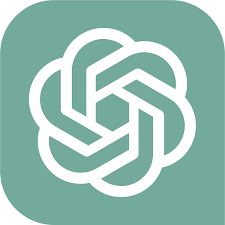
Step 3: How do you learn about LLMs?
Now that you have interacted with ChatGPT using the standard interface by OpenAI, it is time to move on to designing your own systems by utilizing the ChatGPT API. For that, you can explore in this course on Building Systems with the ChatGPT API by DeepLearning.ai. Here, you will learn to split complex tasks into smaller tasks and solve them using prompts. This will show you how to utilise a powerful tool like ChatGPT for your specific tasks.
Once that is done, you can build your first LLM-based application using the LangChain framework in this course on LangChain for LLM Application Development. LangChain is an open-source framework for developing applications powered by LLMs that are not limited to ChatGPT! It enables the creation of context-aware applications by connecting LLMs to data and providing tools for customization, accuracy, and relevancy. In this course, you will learn to build an LLM application using LangChain, which will get you accustomed to building personal assistants and chatbots.
What if the standard LLMs have static knowledge, and you want to augment them to suit your particular use case? That is when you will need to use the RAG technique to augment LLMs to build your application. So, what is RAG? Well, RAG stands for Retrieval Augmented Generation. It is a strategy where you provide additional knowledge to the LLM through a retrieval system. This allows the LLM to answer more specific queries even though it is not trained on it. You can learn about RAGs and more in this Building and Evaluating Advanced RAG Applications course.
Now that you have built a RAG system, you will notice that there are some limitations to it. For one, you will notice that you will not always be able to use the entire retrieved data in a prompt, which limits the response of the LLM. Another would be the hallucinating effect of the LLM, which is hard to eliminate. So, wouldn’t it be better to finetune your model entirely and get a more customized LLM? That is what you will cover in this course, where you will learn about finetuning, when to apply it, how to prepare the data for finetuning, and how to train and evaluate your finetuned model.
Additional Generative AI resources
“Intro to Large Language Models” by Karpathy: Watch here
- The video provides an hour-long introductory overview on LLMs suitable for a general audience, which serve as the fundamental technical element in systems like ChatGPT, Claude, and Bard. You will understand the nature, future directions and comparisons between these models.
“A Hacker’s Guide to Language Models” by Jeremy Howard: Watch here
- In this enlightening video, Jeremy Howard, co-founder of fast.ai, provides a comprehensive exploration of language models. The video includes critical evaluations of GPT-4, practical applications in code writing and data analysis, and hands-on tips for utilizing the OpenAI API.
“Catching up on the weird world of LLMs” by Simon Willison: Read here
- The blog covers the essentials of language models, exploring their definition, functioning, and a concise timeline of LLM development. It identifies top LLM models and offers practical tips, including using them for coding. The blog will also give you a brief overview of how LLMs are trained.
What are Large Language Models (LLMs) by Analytics Vidhya? Read Here
- The blog explores Large Language Models (LLMs), delving into their construction and functioning. It covers their general architecture, provides examples, discusses open-source LLMs like Bloom, explores Hugging Face APIs, and presents practical applications through examples.

Step 4: What about RLHF?
You must have heard of RLHF. RLHF stands for Reinforcement Learning from Human Feedback. It is a machine learning technique that trains a “reward model” directly from human feedback and uses the model as a reward to optimize the performance of an artificial intelligence agent through reinforcement. Now, learn about RLHF in this course by DeepLearning.ai, where you will get knowledge of RLHF, fine-tune an LLM with RLHF, and then finally learn to evaluate it.
Addition Generative AI Resources
Step 5: Where do you learn about diffusion models?
Now, generative AI is not all about LLMs. If you want to learn about image generation using generative AI, then you have to learn about diffusion models and how they work. For this, there is a stunning course by Hugging Face. The material for the course, including notebooks, reading material and everything else, can be found in this GitHub repository. Here, you can find content on basic diffusion models, stable diffusion, fine-tuning a diffusion model, and more.
Additional Generative AI Resources
Bonus: Comprehensive Generative AI program
I know these are a lot of courses to undertake and are not entirely exhaustive. This is why I suggest this comprehensive program on Generative AI called the Generative AI Pinnacle program. This program covers generative AI from beginning to end. It covers topics like Prompt Engineering, RAG system using LlamaIndex, and finetuning LLMs, including LoRA, QLoRA, PEFT, and Stable Diffusion.
Conclusion
I hope you found this list of Generative AI resources helpful and that you have at least enrolled in one of the courses from above! However, there are plenty of other courses which I have left out here. If you find a relevant course on Generative AI, do share it in the comments below. I would love to explore that myself!
Related
- SEO Powered Content & PR Distribution. Get Amplified Today.
- PlatoData.Network Vertical Generative Ai. Empower Yourself. Access Here.
- PlatoAiStream. Web3 Intelligence. Knowledge Amplified. Access Here.
- PlatoESG. Carbon, CleanTech, Energy, Environment, Solar, Waste Management. Access Here.
- PlatoHealth. Biotech and Clinical Trials Intelligence. Access Here.
- Source: https://www.analyticsvidhya.com/blog/2024/01/ultimate-list-of-generative-ai-resources/
- :has
- :is
- :not
- :where
- $UP
- 1
- 225
- 7
- a
- Able
- About
- about IT
- accuracy
- Additional
- advanced
- advancement
- Agent
- AI
- All
- allows
- also
- Although
- always
- am
- amazing
- an
- analysis
- analytics
- Analytics Vidhya
- and
- Another
- answer
- any
- api
- APIs
- Application
- applications
- Apply
- architecture
- ARE
- around
- artificial
- artificial intelligence
- AS
- ask
- aspiring
- assistants
- At
- audience
- augment
- augmented
- basic
- Basics
- BE
- been
- Beginner
- Beginners
- Beginning
- behind
- below
- BEST
- Better
- between
- Blog
- Bloom
- breathtaking
- bring
- build
- Building
- built
- businesses
- but
- by
- called
- CAN
- capabilities
- case
- cases
- cater
- chatbots
- ChatGPT
- Co-founder
- code
- Codecademy
- Coding
- comments
- Common
- comparisons
- compiled
- complex
- comprehensive
- concise
- Connecting
- construction
- content
- course
- Coursera
- courses
- cover
- covers
- Creating
- creation
- Creative
- critical
- curious
- customization
- customized
- cutting-edge
- data
- data analysis
- data science
- deeper
- deeplearning
- definition
- designing
- desired
- detailed
- developing
- Development
- DID
- Diffusion
- digital
- digital platforms
- directions
- directly
- do
- done
- editing
- effect
- Effective
- effectively
- effortlessly
- element
- eliminate
- else
- emails
- employed
- empower
- enables
- end
- Endless
- engage
- Engineering
- enhance
- enrolled
- enthusiast
- Entire
- entirely
- Era
- essentials
- evaluate
- evaluating
- evaluations
- Even
- everything
- evolution
- exactly
- examples
- exemplified
- exhaustive
- exploration
- explore
- explores
- Exploring
- extensive
- extract
- Face
- FAST
- feedback
- field
- Finally
- Find
- First
- For
- found
- Framework
- from
- functioning
- fundamental
- Fundamentals
- future
- gap
- gateway
- General
- generation
- generative
- Generative AI
- gentle
- get
- Give
- good
- Grow
- guide
- hands-on
- Hard
- Have
- heard
- helpful
- here
- Hidden
- High
- highly
- hope
- How
- How To
- howard
- However
- HTTPS
- human
- i
- identifies
- if
- igniting
- image
- image generation
- images
- imaginations
- in
- includes
- Including
- individuals
- Intelligence
- interact
- Interface
- into
- introducing
- Introduction
- introductory
- IT
- ITS
- jpg
- jump
- just
- Know
- knowledge
- landscape
- language
- large
- LEARN
- Learn and Grow
- learner
- learning
- least
- left
- less
- Life
- like
- limitations
- Limited
- limits
- List
- looking
- Lot
- love
- machine
- machine learning
- magic
- many
- marvel
- material
- max-width
- meticulously
- MidJourney
- model
- models
- more
- most
- Most Popular
- move
- must
- Nature
- Need
- New
- next
- no
- notebooks
- Notice..
- now
- of
- Offers
- often
- on
- ONE
- open source
- OpenAI
- opportunities
- Optimize
- or
- Other
- our
- out
- outputs
- overview
- own
- Pace
- particular
- patterns
- performance
- personal
- pinnacle
- Platforms
- plato
- Plato Data Intelligence
- PlatoData
- Play
- Plenty
- Popular
- poses
- possibilities
- potential
- powered
- powerful
- Practical
- Practical Applications
- Prepare
- presents
- professional
- Program
- Progress
- prompts
- provide
- provides
- providing
- queries
- rag
- rapid
- Read
- Reading
- redefined
- reinforcement learning
- relentless
- relevant
- remains
- reshaping
- Resources
- response
- result
- retrieval
- revolutionary
- Reward
- Rise
- risks
- roadmap
- Science
- scientific
- serve
- set
- Share
- show
- Simon
- skill
- smaller
- So
- Society
- SOLVE
- some
- something
- sophisticated
- specific
- split
- stable
- standard
- stands
- start
- started
- State
- Step
- Steps
- Strategy
- structured
- Stunning
- suggest
- Suit
- suitable
- system
- Systems
- tasks
- Technical
- technique
- Technology
- tells
- text
- text generation
- than
- that
- The
- The Basics
- their
- Them
- then
- There.
- These
- they
- thing
- think
- this
- though?
- Through
- time
- timeline
- tips
- to
- tool
- tools
- top
- Topics
- Train
- trained
- trains
- Udemy
- ultimate
- understand
- understanding
- undertake
- use
- use case
- used
- uses
- using
- utilise
- Utilizing
- various
- Video
- visual
- want
- Watch
- Way..
- we
- WELL
- What
- What is
- when
- whether
- which
- while
- whirlwind
- why
- will
- with
- Work
- workings
- world
- would
- write
- writing
- yet
- you
- Your
- zephyrnet
- Zero-Shot Learning



